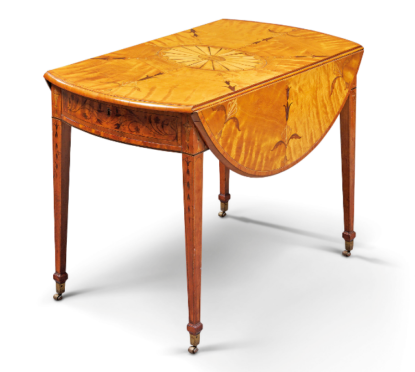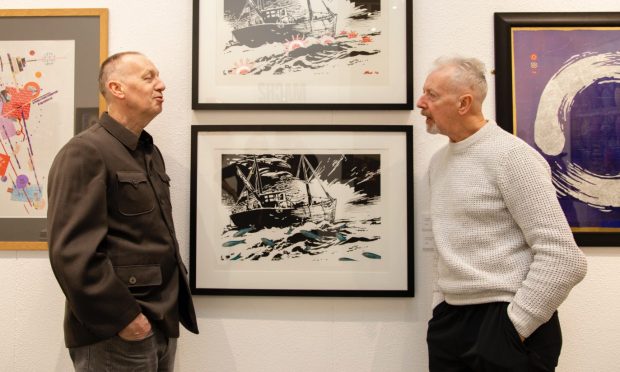Tea was once a luxury. Its price, heavily taxed, placed it beyond all but the well-to-do. The Female Spectator in 1745 declared that the tea table “costs more to support than would maintain two children and a nurse.”
But tea soon became a necessity. By the late 18th Century, all classes of society had become addicted to it, and furniture pattern books, such as Thomas Chippendale’s famous director, illustrated here a week or two back, provided a wide range of designs for tea tables, stands, trays and lockable caddies.
Introduced, according to Thomas Sheraton, at the behest of the Countess of Pembroke (1737-1831), who was said to be the first to order one, Pembroke tables were lightweight occasional tables perfect for taking tea in great style. They normally had two hinged flaps either side of a rectangular frame on square tapering legs. When tea was finished, down would go the flaps and the table would be stowed away to one side.
The example from auctioneers Christie’s in today’s picture is a fine George III tulipwood-crossbanded satinwood, satin birch and marquetry Pembroke table dating to the late 18th century – the height of Georgian elegance.
Lifting it beyond the ordinary was a superb bell-flower and anthemion design radiating from the centre of its top. Made from the finest woods in a top workshop it would have wowed its first owner – and, by repute, this table was commissioned by Alexander Monro of Auchinbowie, near Stirling. It then passed by descent until sold by Christie’s in April 1974 with a pair of demi-lune card-tables.
Some 28 inches high by 45in wide and 38in deep, the table took £7500 at Christie’s, London.










